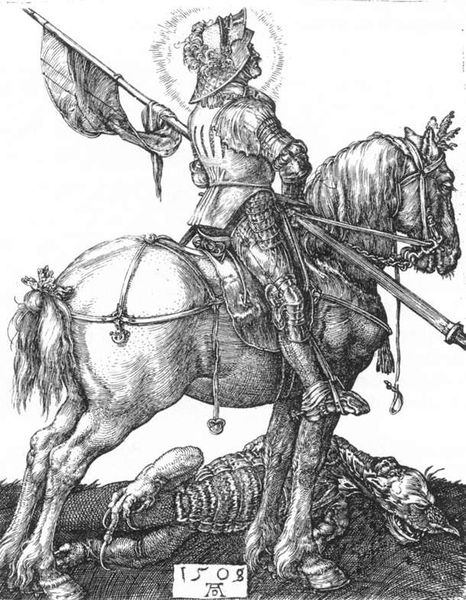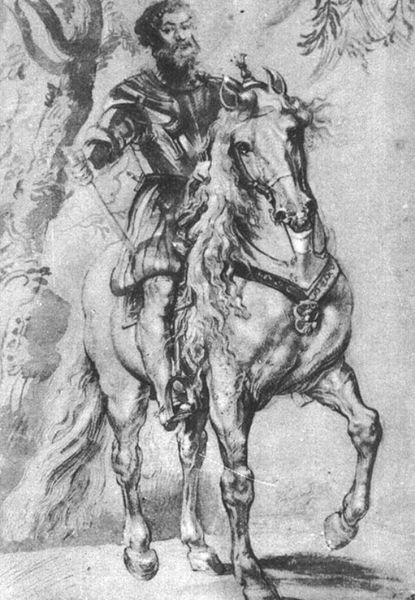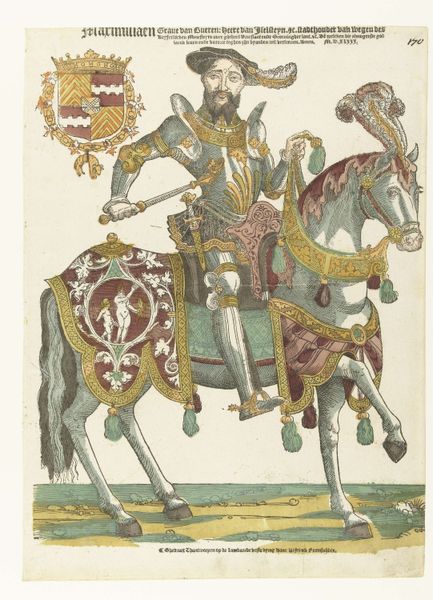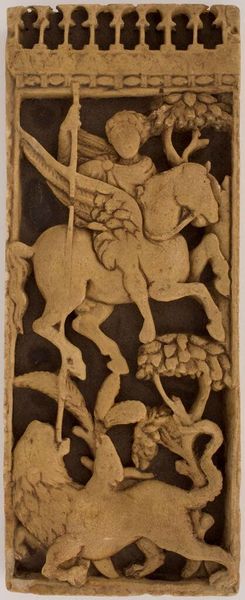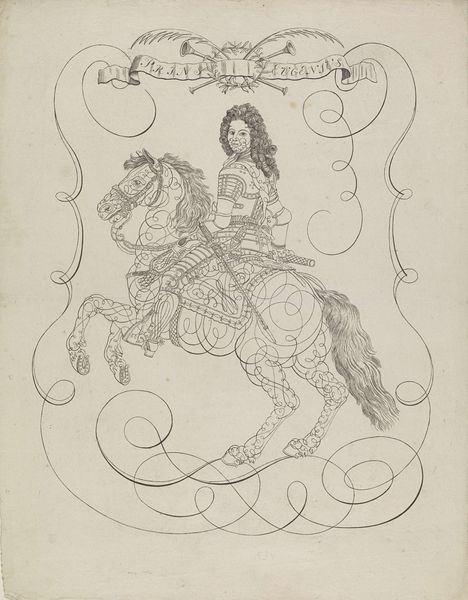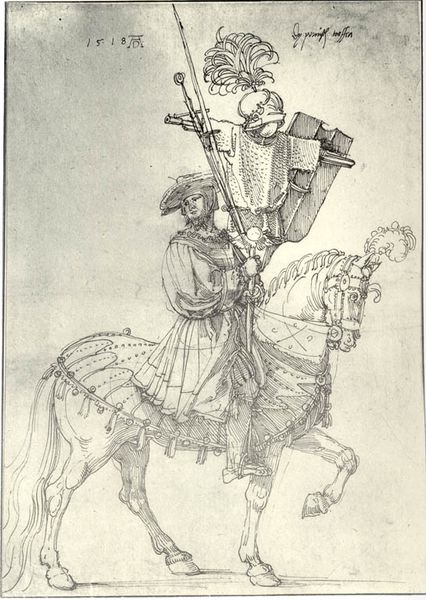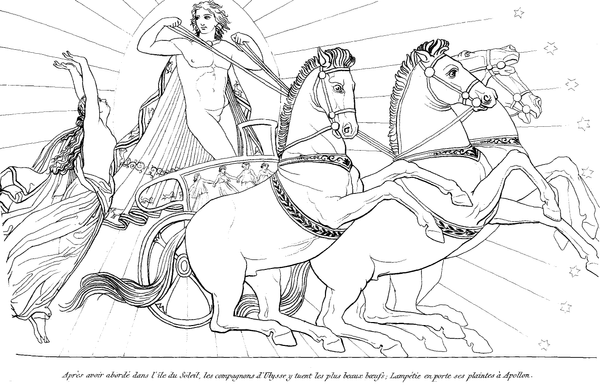
Lex Regia Det Er: Den Souveraine Konge-Lov,. . .Herr Friderich den Tredie. . .Konge Til Danmark Og Norge...d. 14 Novemb. 1665 1709
0:00
0:00
drawing, print, ink
#
portrait
#
drawing
#
medieval
#
baroque
# print
#
book
#
figuration
#
ink
#
horse
#
men
#
line
#
history-painting
#
erotic-art
Dimensions: book: 19 11/16 x 14 in. (50 x 35.5 cm) page 7, plate: 18 7/8 x 12 5/8 in. (48 x 32 cm)
Copyright: Public Domain
Curator: What immediately strikes me is the swirling energy, almost dizzying! It’s like looking into a vortex, but a regal one. Editor: You're responding to "Lex Regia Det Er," dating to 1709, it's an ink and print depiction of King Frederick III of Denmark and Norway. Specifically, it is a frontispiece from a book detailing the Lex Regia or King's Law, establishing absolute monarchy in Denmark in 1665. Curator: Ah, the context is so important! It reframes my initial impression entirely. Those swirling lines— are they meant to depict movement, perhaps a sense of unstoppable power? Are they are an attempt to translate something about the idea of royal law, or hereditary rule? Editor: They certainly speak to an assertion of power, and much more than that. Horses in portraiture are about military command, dominion, they appear to symbolize masculine power as well. Think of how this echoes visual tropes used by other European monarchies at the time. This image and that book worked to normalize the power of absolute monarchy through iconography. Curator: But also notice how that frame around Frederick, a vortex as you said, Editor, mirrors a gilded cage of sorts, setting boundaries for acceptable royal conduct through complex visual and symbolic structures. He's sovereign, yes, but bound by these perceived historical and now literary precedents as well. It is almost subversive if one considers that he's ruling as an absolute monarch because a prior one dictated that! Editor: I hadn’t considered that contradiction quite so overtly. It is the paradox of power solidified through ink and image. The swirling patterns could represent not just the energy of rule, but the complex network of tradition and law Frederick III had to navigate to even arrive at his absolute power. Each line signifies interconnected legacies. Curator: Do you suppose the patterns that repeat so meticulously might have carried spiritual importance? In several cultures, spirals signify life, growth, eternal cycles. Editor: An excellent question. I do see symbolic use of the circle here in all ways, in the decorative and the essential. Curator: In conclusion, beyond its surface-level grandeur, "Lex Regia Det Er" presents us with crucial questions. Is power truly absolute, or always constrained? It uses line and symbol to hint that royal identity might be as constructed, or contoured, as any other social designation we examine. Editor: Yes, examining how it employs iconography grants insight not only into historical context but also into the psychology of power, its symbols speaking across centuries about ambition, authority, and their delicate performance.
Comments
No comments
Be the first to comment and join the conversation on the ultimate creative platform.
